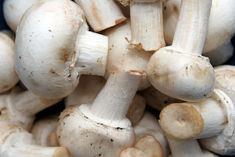
A major promotion for Irish mushrooms targeted mainly at young women has got underway in the British market.
This year’s €500,000 (£440,409) marketing drive is organised by the UK Mushroom Bureau, with the cost being shared by Bord Bia and trade interests on both sides of the Irish Sea.
According to Michal Slawski, development and marketing specialist with the board’s horticulture division, the prime target of the promotion is women aged between 25 and 34, as research has shown that these consumers “are currently not consuming as many mushrooms as older age groups”.
It has also been established that “they are the main shoppers in their households and important consumers of the future”, said Slawski.
The promotional campaign has concentrated on women’s magazines such as Hello, Take a Break and Good Food, as well as on internet sites, including JamieOliver.com. GoodFood.co.uk and iVillage.co.uk. A second phase of the campaign is due to get underway in July, with another wave of similar advertising.
The UK retail mushroom market is worth £346 million, said Slawski, and “has been performing strongly” in recent months. Year-on-year figures to the end of February have shown six per cent value growth in the market, with white button/closed cup mushrooms the prime mover, showing eight per cent growth.
This variety makes up the bulk of Irish mushroom exports, giving the Republic’s growers a 26 per cent share of the UK market. That share has been “growing marginally” in the last few years, said Slawski, and there are hopes that the latest promotion will provide an additional boost.
Irish annual mushroom output totals 55,000 tonnes, with nearly 80 per cent of that exported to the UK. “It’s a very important market for us,” said Slawski, “but the fluctuations between the value of sterling and the euro can create difficulties for exporters. At the moment, because of the uncertainty over the election, the pound is down, which is bad news.”
Apart from the currency issue, the Irish face a challenge in the UK market from local growers as well as from Dutch and Polish imports, plus “Ireland’s high cost base” in terms of labour, energy, and other inputs. “We must look for improved productivity to stay competitive,” added Slawski.



